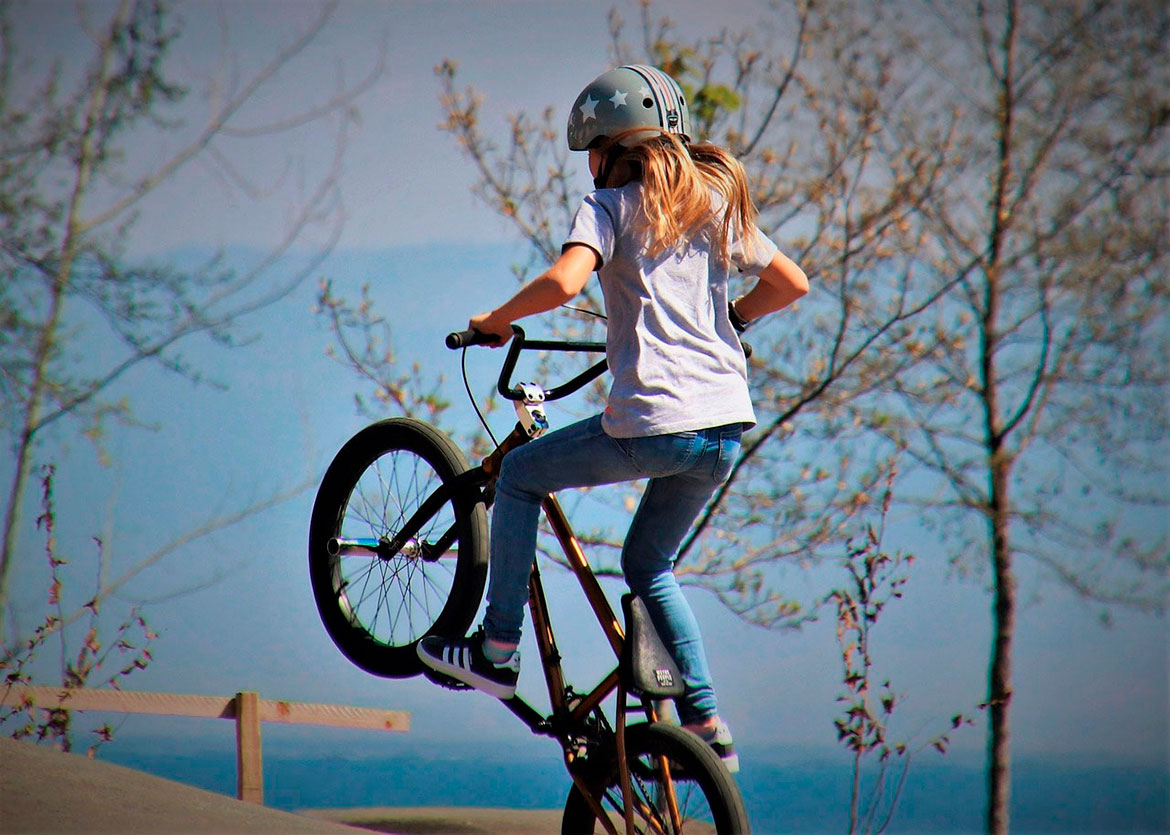BMX Safety in the Park and on the Trails
BMX is a unique form of cycling that is often categorized as an extreme sport. It originated in the late 1960s, during the peak of motocross's popularity, in Southern California. Although the sport has existed for more than half a century, it took until 2008 for it to make its Olympic debut, at the Games held in Beijing, China.
Although BMX was originally created with the intent to serve as a different form of off-road motorcycling due to youth imitating motocross styles of riding and racing on bicycles, BMX bikes now have a variety of uses. In fact, there are five BMX disciplines in total: park, dirt, flatland, race, and street. And today, there are even variations to the sport of BMX, including freestyle and dirt-jump BMX.
- The Most Dangerous Olympic Sports: In this article, learn exactly why BMX is one of the most dangerous Olympic sports.
- BMX Cycling: Learn more about the history behind BMX cycling, how it spread across the world, and its 2008 Olympic debut in Beijing's program.
- How to Get Into BMX (video): This video and article center around BMX racing, clubs, events, and how you can get into BMX.
- Helmets and Safety Precautions in BMX: This article gives the perspective of some who are against the use of helmets and responses to why this safety precaution is so important for cyclists.
- Safety Tips for BMX Riders: It's important that anyone interested in getting started with BMX understand how to protect themselves from injury with the right equipment and gear.
- Why Are BMX Bikes So Small? The most obvious difference between BMX bikes and other types is their size: BMX bikes need to be nimble and lightweight to help riders execute tricky maneuvers.
- The Rules of BMX Racing: Dive into the rules and regulations of BMX racing, including time trials, qualifying to race, and the points system.
- BMX New Rider Guide (PDF): Here, you'll find important information about licensing and insurance, a basic bike checklist, and even how race day works.
- BMX Equipment: There are many equipment requirements for the racer as well as the bike in BMX racing. Learn what is required and what is not permitted here.
- Building a BMX Track: Learn about how to design your own BMX track for optimal safety and enjoyment.
- Safety in BMX: Here is a comprehensive list of the recommended safety gear for BMX racing, plus a general idea of how much everything will cost.
- Get Into BMX: Equipment: Learn more about BMX bike frame sizes and wheels and which size is right for you.
- Buyer's Guide to BMX Bicycles: Use this BMX bike buyers' guide to help determine what kind of bike you need for your ideal use.
- Staying Safe on a BMX Bike: This article goes into detail about how you can stay safe on your BMX or mountain bike.
- Kids' Bikes: How to Choose: Parents can use this resource to help figure out which kind of bike is right for their kids: road, cruiser, mountain, or BMX.
- Kids and Bicycle Safety: Learn the rules of the road for cyclists and more on sidewalk vs. street riding.
- Facts About BMX Biking: Here, you'll find an article filled with interesting BMX information including its history, development, key features, and variations.
- A Short History of BMX Racing: Look at the origins of this sport and how it has developed into an Olympic event.
- All About BMX: This resource is perfect for kids interesting in learning more about BMX.
- Mountain Bike vs. Road Bike: This resource is great for adults to learn the differences between a mountain bike and a road bike.
- How to Decide Between BMX or Mountain Bike: This article covers the advantages and disadvantages between BMX and mountain bikes and how to decide between the two.
- BMX and Skate Parks: Often, skate parks are coveted practice spots for BMX bikers, too.
- BMX Racing Bikes vs. BMX Trick Bikes: Discover the differences between a BMX racing bike and a BMX trick bike here.
- How to Build Your Own Backyard Pump Track: Here, find the steps to creating your own pump track.
- BMX Bike Maintenance: Find out how to maintain your BMX bike to keep it in great condition.
Find more about the author: Kim Hart


